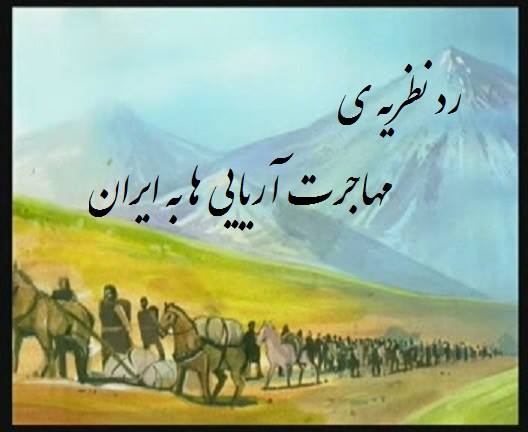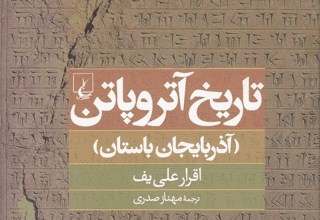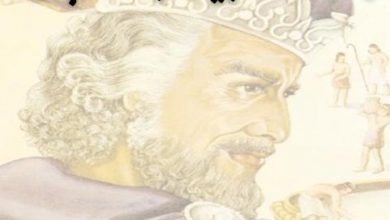Rejection of the theory of Aryan migration to Iran

The inaccuracy of the Aryan migration theory
The custom of western historians is to say that large groups of immigrant tribes
From the beginning of the first millennium BC onwards, Iranians entered the Iranian plateau and settled in parts of Iran and formed three great unions until the eighth century BC. : One is the union of Parthian tribes
Northeast Iran; Another union of Median tribes in Azerbaijan and Hamedan to Ray and Isfahan; and the third union of Pars tribes. This speech is clumsily imitated by some Iranian historians
To what extent it can be true and when the migration of these three groups of Iranian tribes took place inside the Iranian plateau is a matter that archaeologists and history researchers
Ancient Iran does not agree on it; And everything they have said so far is based on speculation and repeating the undocumented words of Westerners . In many writings of Western historians
We read that the tribes that lived in the west of Iran until the end of the second millennium BC were not Iranian. But there is room for controversy in this statement; Because as we saw in Aryan
Tiles and tiles cannot be doubted; And they have been jagirs in western Iran at least since the end of the third millennium BC . The non-Aryanness of Lulobis(The ancestors of the current Lors) Also proven so far It is not, but the opposite can be proven . The efforts of some Western Iranologists to prove that non-Iranian peoples have settled in the north-west of the Iranian Plateau lead to nowhere. does not take And the assumption that Aryan peoples have lived in the north and west of the Iranian plateau since long ago and from very distant times can be proven more. . This suspicion is strengthened when we know Aryan peoples were settled inside Anatolia since ancient times and formed the great Hittite and Mitani civilizations and then Armenia. . Even many Western historians consider the Mitanni ancestors The Kurds of the western regions are known as Greater Kurdistan . So, there is no room for dispute that behind these, Aryans were also in the plateau of Iran, including in Azerbaijan and northern Iran; but Because they did not have significant power, and they were not considered rivals for the states between the rivers, there is no mention of them in the Babylonian and Assyrian documents until the beginning of the fifth millennium.. The history of the Iranian people was not associated with migration from outside the Iranian plateau and dealing with non-Aryan tribes inside the Iranian plateau, because there was no presence of non-Aryan tribes anywhere in any part of the Avesta.
It is not mentioned in the plateau of Iran; However, the Aryans who migrated to India also have events related to their migration and their encounters with native tribes Rig bye and in Mahabharata Te reflection has been found. The little displacement that the Iranian tribes have done inside the Iranian plateau was not accompanied by encounters with others, nor by killing or destruction. . In the Avesta there is a trace of such encounters It is not visible, but what is there are small clashes between the Iranian groups themselves . The only sign of the encounter that the Iranian immigrant groups had with the Aryan natives can be found in connection with
The migration of the Aryans was from the Turani tribes, who in the 2nd millennium BC crossed the Syr Darya into the Iranian Plateau, and in this passage to the north of the Aras River and east
Anatolia arrived, and we will refer to them later. In the collective memory of Iranians of this event, the emphasis is on the Iranianness of the natives who passed through them, and the reference It has reached the devas of Nurs who fought with the Iranians (God-worshipping Turanis ). Until the formation of the Median kingdom in the Iranian plateau, except for the small Khozi tribe (Elam ) No sign of anything Non-Aryans have not been seen . Western Iranologists, who talk about the Medes, Persians, and Parthians as immigrants and are interested in calling all Iranian tribes immigrants without any historical documents. all their efforts to find traces of non-Aryan tribes outside of Khuzestan inside the Iranian plateau have been fruitless.. So far, everything from human creations in Archeological excavations in different areas of the Iranian plateau show that the Iranian plateau has been the home of various branches of the great Aryan people for thousands of years..
Those who talk about the migration of the Median tribes in the beginning of the first millennium BC, it is not clear why they do not want to remember that the Median land was in the neighborhood of the powerful empire of
Assyria was located, and if the Medes were newcomers to the region at the beginning of the first millennium before Christ, it was natural that the main inhabitants of these lands, if they themselves had the power to resist
The new arrivals did not have to reach out to the Assyrians to support themselves . The entry of any large foreign group into a inhabited land in the olden days, usually with an aggressive war and dispersal of the inhabitants The original and possession of their properties has been done . If the Medes were newly arrived immigrants, they were expelled from the region by the imaginary non-Aryan natives with the help of the Assyrians who were looking for any They were looking for an excuse to invade these lands, it was very easy . We do not see traces of such an event in any of the Assyrian sources . Some western Iranologists without reason and An explanation is that this region was the place of non-Aryan tribes before the arrival of the Aryan Medes. The question is what race these people were from and what artifacts were obtained from them
Is? They have no answer for this question and their claim is not based on any reason except that they want to doubt the history of the Iranian people in the history of Iran. . the reason The main reason that non-Iranian peoples did not exist in Azerbaijan, Hamadan region, Kurdistan and Zagros mountains is that from the time of the Median kingdom onwards and during the Achaemenid period, no name other than
The Iranian name has not been seen among the people of these regions . If there were non-Iranian tribes in these regions, we should at least call them by non-Iranian names in the next few centuries.
We find that he was one of the people of these regions or that one of the settlements in the region kept its non-Iranian name and remained in the history of Iran.. In that the people of the north of Aras river are also themselves They have been considered Aryans, historians agree, but they still like to say that non-Iranian people once lived here, without saying where they went.
No trace of them was left in history and no sign of them was given in historical stories. Diakonov writes that "Persians, Medes, Sikhs and Albanians (People south of the mountains Caucasus) and the peoples of Central Asia (That is, the people of northern Afghanistan, Uzbekistan and present-day Turkmenistan ) They called themselves Aryans, and it has not been seen that the relatives belonging to one of the other groups or families They should be assigned a language and call themselves by this name; And he mentioned several personal names among the people of these regions that had the prefix "Arya".. (History of Mad. Dyaknov:ص۱۴۳)
It is less possible to argue about the fact that the entire plateau of Iran (Except for the western half of Khuzestan) It has been the seat of Aryans for a long time, and since time immemorial. Proof It is impossible to say otherwise . However, until today, this baseless false hypothesis of Westerners is repeated among some Iranian historians that groups of Aryan tribes who speak They had common and similar dialects. At the beginning of the millennium BC, they migrated from the eastern plateau of Iran to the west and south of Iran, and some of them also migrated to the Hyrcan region and around the Atrak River. They stayed. This is a saying that is also written in Iranian textbooks. This hypothesis says that these were the same tribes that founded the three great confederations of Media, Persia and Parthia formed . The insistence of western researchers that there was no news of the Aryan people in the Iranian plateau before this is a baseless insistence; And it cannot be doubted that before this
The supposed migrations of Iranian tribes were jagirs in Iran for centuries and millennia . The names that exist among the settlements in the northwest of the Iranian plateau, which show that Aryans lived in the distant times
This land has been jagir. We know that Indra He was one of the most ancient gods of the Aryan people . This god was taken to India by Aryan immigrants, and he is still his god .
In the Assyrian documents belonging to the 8th century BC, the name "Indra Patianu" is mentioned as having been in Azerbaijan. This name, which is purely Aryan, can be left from a very distant time . Perhaps Those peoples who in Iranian mythology "Divan" (It means idolaters ) They are said to be the descendants of the same people; Because since the wars of the Aryan tribes, Indra (God of wrath and destruction ) To Iranians became the epitome of evil . Another word is similar to the same word "Atrapatian" which was applied to some tribes of Azerbaijan at one time in history, and later Atrapatikan and Atrapaigan.
(Azerbaijan) He took his name from them . The meaning of this word "Guardian of Azar". / Azar worshiper is "; And we know that Azar was one of the gods of Aryan tribes . So the name of these people can also go back to the distant era
date, and at least belong to the second millennium BC. The Mughans, who later worshiped Azar, were among the same Aryans. In the inscription of Darius the Great, the Maghs are the tribes that Azerbaijan took their place, and Gaumata rose from among them and tried to take the kingdom out of the hands of the Achaemenids, and Darius removed him; And we will know him in his place.
At the beginning of the millennium BC, the Assyrians, who were in the north of Midran, took steps to develop their state, and in the second and third decades of this century, they carried out campaigns to take slaves and plunder.
They went to Hamadan and Azerbaijan . By occupying lands south of Lake Van and west of Lake Urmia, they expanded the borders of their country in the north..
From the middle of the 9th century BC onwards, in Assyrian documents, the country "Pers-y" with the Assyrian pronunciation Pars-va) It is mentioned that in the current Kurdistan (Sulaymaniyah and Sanandaj area and between Doab and Shahrzor ) It is located and has a union of 27 villages and 27 Dehkhoda (The crow) have been. These Dekhodas were Assyrian tax collectors during the reign of Shalem Nasr III, in the middle of the 9th century BC. . till now
Assyrians had occupied many Aryan settlements in the north of the Middle River in the lands that now form the southern Kurdistan of Iraq. . Even the city of Nineveh (Located at 100 A kilometer north of Ashur city ) which became the administrative and military capital of Assyrians, its name is not Semitic, and maybe Aryan, for example : The Assyrians occupied and destroyed the natives .
It means that even the city that the Assyrians turned into their capital belonged to the ancestors of the current Kurds.
In the stone inscriptions left by Shalem Nasr III from the "Amaday" tribes. (It means females ) It has been said that they were jagirs in the eastern neighborhood of Pars Vai region. There, from a decree named "Arta Saru" Amir "Shurdura" is named as the one who gave ransom to the king of Assyria . "Arte Saru" Assyrian pronunciation back KhastarIs. we know that art you Khastar (Sultan Adel ) It is a purely Iranian word.
And it is an attribute that arose from the religious culture that arose from the teachings of Zoroaster . We can definitely say that at this time (Half of the ninth century BC) Culture originated from Zoroastrian teachings among the people This point in the western plateau of Iran has been penetrated and expanded. This Kave, who gave himself the title of Arta Kashtra, was one of the followers of Zoroastrian teachings and one of the princes of Media..
The theme: The book of the history of Iran by Amir Hossein Khanji, the first part of the creation of Iran, the chapter of the Madian kingdom (In the electronic version of the book, refer to pages 129 to 133)






I have been interested in history for some time, especially the middle rivers. I am not an illiterate person and I have studied for 19 years. I did not see any contradiction in this article and I liked it very much. But it is a separate but related topic. :Some people are busy inciting nations against each other, they have taken advantage of people's lack of literacy and want to change history. For example, they say that the Kurds are a migrant people and have nothing to do with the Medes, and even more strangely, they say that the Medes were Turks. While the Aryan ancestors of the Kurds, several thousand years before the appearance of the Medes in the current geography have lived in Kurdistan. The Hurrians(2000The year before the articles), the Mitanni(Almost 1500 years before the Medes)Parsavas (Almost 400 years before the Medes)And... all Aryans descended from Ando and had a government before the Medes. The Mitanis in the island(Syrian Kurdistan and Western Kurdistan of Türkiye)The Parsavas lived in South Kurdistan and the Hurrians lived around Lake Van Varumieh, and it is very likely that the union of these peoples with the Mannais and some other peoples led to the creation of the first Iranian empire, the Medes, which caused the fall of the Assyrian Empire and marked the golden age of Iranian civilization. Even if today's Kurds are not the same Medes of yesterday, it is not so important because the Hurrians, Mitanis, Paswas and….They have been permanent inhabitants of this geography and they are Aryan descendants and that is the subject of Cyrus' writings. (The author of the above article)All the points I mentioned have been confirmed by the found inscriptions, and to follow up on the truth of my statements, you can refer to Wikipedia. However, the Azeris are as close to the Medes as the Kurds, but the main point is that the language is Madi and Azeri. It was not Turkic, Azeri was an original language intermediate between Kurdish and Persian. To prove this, I take the poems of Hamam Tabrizi, who lived in Tabrizmi in the 7th century of Hijri, as a witness.:
بدیدم چشم مستت رفتم از دست کوام آذردلی بو کو نبی مست
دلم خود رفت و میدانم که روزی به مهرت هم بشی خوش گیانم اژ دست
به آب زندگی ای خوش عبارت لوانتلاو جَهمن دیل و گیان بست
دمی بر عاشق خود مهربان شو که زیسر مهرورزی گست بی گست
به عشقت گر همام از جان برآیذ مواژش کان یوان بمروت و وارست
گرم خا واکَنی لشنم بوینی به بویت خُته بام ژاهنام سرمست
Azeri and Kurdish friends should know that according to proven evidence, these two peoples are like brothers of the same family, with the difference that one of them grew up among Kurds and the other among Azeri, and they are unaware of this closeness and brotherhood, so for peace of mind, pay more attention to common points, do not insult each other because this insult It means insulting yourself.
Proud and victorious people of Iran and the ancient civilization of Iran
It's Wikipedia!!!؟! Anyone can go and write whatever he wants, there is no scientific source
Mr. Korosh, your writing is more than a scientific article based on your historical knowledge and understanding, it is a writing born of your Turkish imaginations and excessive illusions, you think too much in this writing and ideals. that you know, but regretting your ignorance, unfortunately I have to tell you that your Excellency has not yet looked at the Avesta closely and even from a meter away, let alone read it, unfortunately I have to tell you that the mouth of your thoughts is completely empty and Your illusion is the absurd thoughts of Nasser Pour Pirar, who considers himself knowledgeable in the science of history, but is nothing more than a madman.. My request to you is to read history without borrowing, of course, it seems that you are Turks, and if you are, your opinion about Aryans and Iranians is also the opinion of a foreigner, because Turks who have settled in Iran are also foreigners. They are not more. Study, try and study again. Read at least one book.
Hi. The article and text that you see, as mentioned at the end of the article, are from the pages 129 until the 133 Dr. Amir Hossein Khanji's book has been written, but I did not write anything about myself and my little knowledge. Like Porpirar, Mr. Khanji does not have a hostile approach towards Iran. Dr. Jahanshai Derakhshani had also proposed this theory before and gave good reasons. Anyway, this theory is the subject of debate among historians. Thank you
Korosh, John, I expected more from you. This is a very watery article without reference. For example, in Kashan, if I'm not mistaken, there are two cemeteries and two types of burials, burials with Aryan rituals and customs, which are buried at home and under the stove, and this There was a long gap between the two, and then they gradually get closer, and this shows who migrated to whom and many other things.. Then, until now, the greatest scientists and historians did not have your claim until now. Indeed, PM is wrong and Q is right
Korosh, John, I expected more from you. This is a very watery article without reference. For example, in Kashan, if I'm not mistaken, there are two cemeteries and two types of burials, burials with Aryan rituals and customs, which are buried at home and under the stove, and this There was a long gap between the two, and then they gradually get closer, and this shows who migrated to whom and many other things.. Then, until now, the greatest scientists and historians did not have your claim until now.